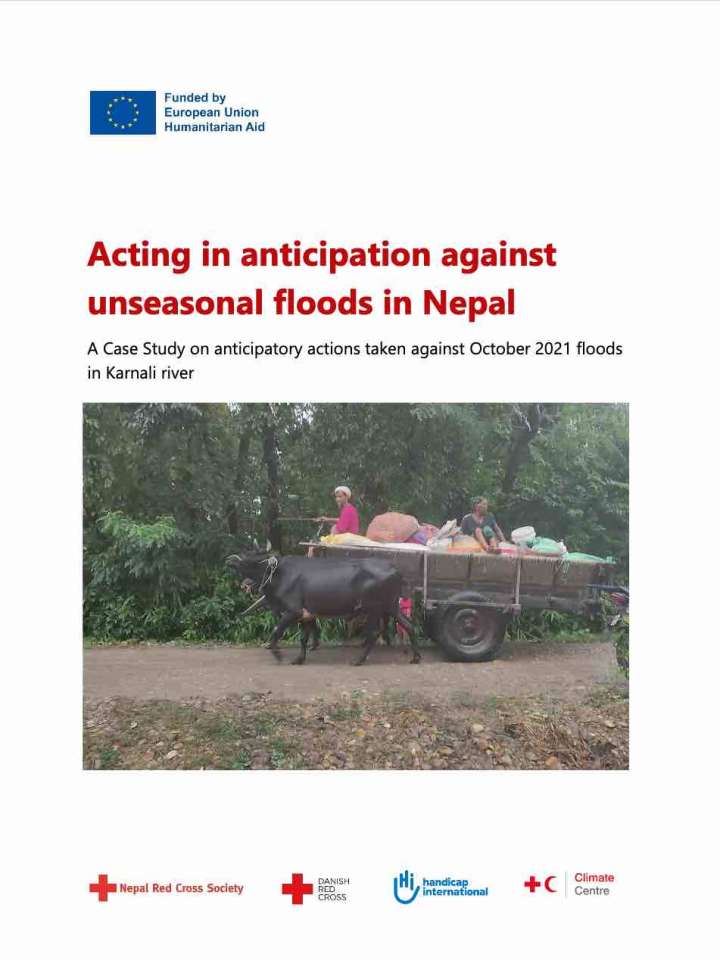Acting in anticipation against unseasonal floods in Nepal - A case study on anticipatory actions taken against October 2021 floods in Karnali river
This case study describes the anticipatory action measures taken in the light of the 2021 Karnali floods in Nepal. It summarizes the Nepalese anticipatory action mechanism, and elaborates on the lessons learned from the recent floods. Nepal Red Cross Society (NRCS) with financial support from the EU Civil Protection and Humanitarian Aid Operations, and technical support from Danish Red Cross, Red Cross Red Crescent Climate Center (RCCC) and Handicap International (HI) started working on Forecast based Action (FbA) and Shock Responsive Social Protection (SRSP) for flood and cold waves in 2020. The FbA mechanism comprises of impact thresholds, vulnerability indicators and Early Action Matrix (EAM) which was jointly developed with the NDRRMA, DHM, and the local government authorities in July 2021.
The mechanism was developed for five high-risk municipalities along the Karnali and Babai river basins, in Kailali and Bardiya districts. In the event of a flood forecast, the EAM guides NRCS and the local authorities to take pre-agreed early actions and defines roles and responsibilities of various line agencies at different levels of governance. These early actions cover areas of:
- Early warning messaging (EWM)
- Temporary shelter
- House strengthening
- Water, Sanitation and Hygiene (WASH)
- Livestock and livelihood
- Ready to eat (RtE) food
- Critical services
- Shock responsive social protection
Explore further
